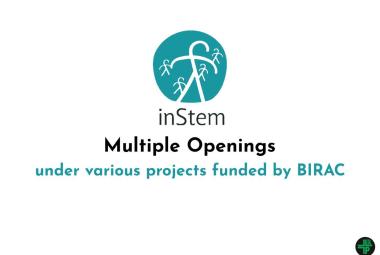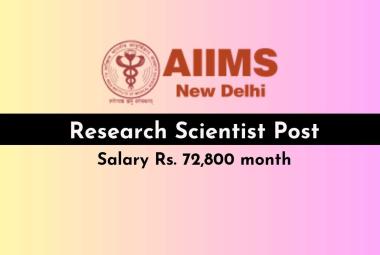{ DOWNLOAD AS PDF }
ABOUT AUTHORS
J A Sathwara1, A M Bhandari2
1* Department of Pharmacology, A.R.College of Pharmacy & G.H.Patel Institute of Pharmacy, Anand ,Gujarat
2 Department of Clinical Pharmacy, A.R.College of Pharmacy & G.H.Patel Institute of Pharmacy, Anand ,Gujarat
*jignasa.sathwara@gmail.com
ABSTRACT
The development of drugs is costly for the Pharmaceutical companies and without the protection of Intellectual Properties, the formula for the drug can easily be duplicated and can be synthesized at cheaper cost. The U.S. intellectual property laws protect the rights of small inventors and large corporations alike to guarantee “the first to invent” the exclusive right to the patents. To solve the drug price inflation within the U.S., an initiative has been taken that drug patents are different from other innovations. Under the new plan, new drugs would be sold at generic prices upon FDA’s approval. New drugs will no longer be rewarded by net-profit from sales, but instead by Medical Innovation Prize Fund at a level of 0.5% of the gross domestic product, that provide money to developers of new products based upon the actual impact on health outcomes over ten years. Although patents protect the rights of the investors and courage innovations, there are certain ideas that should not been patented. Potentially lifesaving technologies should be separated from other type of innovations, and money making should not be the only inceptive for drug discovery. The number of worldwide who have access to medicines is low, an allowing patents on drugs, although increase the number of advancements in lifesaving technologies; it will decrease the number of people who access to them. International efforts should focus on allocating monetary motivation to provide people to access drugs.
[adsense:336x280:8701650588]
REFERENCE ID: PHARMATUTOR-ART-2452
|
PharmaTutor (ISSN: 2347 - 7881) Volume 4, Issue 12 Received On: 28/07/2016; Accepted On: 11/08/2016; Published On: 01/12/2016 How to cite this article: Sathwara JA, Bhandari AM; Drugs and Intellectual Property Rights: positive and negative aspects; PharmaTutor; 2016; 4(12); 29-32 |
INTRODUCTION
In recent some years, the patentability of health-related innovations has become under debate world-wide. Lots of money is invested each year in pharmaceutical research, but the percentage of people who can afford potentially life-saving drugs remains minute. The consensus amongst the World Trade Organization (WTO) is that public health leads intellectual property rights during national emergencies. However, the problem is not as simple as a mere question of morality. The development of drugs is costly for pharmaceutical companies, and without intellectual property law protection, the formula for the drugs can be easily duplicated and the drugs can be synthesized at a cheaper cost. Thus, intellectual properties laws often allow companies to monopolize the synthesis and sales of drugs. Unfortunately, this exclusive right to manufacture and sell drugs provides the necessary monetary incentive for drug discovery. [1] Under the current TRIPS (Trade related aspects of Intellectual Property Rights) regime, the inventor of a new drug is able to apply for a patent for that drug, which will give the owner of the patent a monopoly right. The patent holder can then charge considerably higher than marginal cost for the drug. This is the main reason behind the intense criticism of the current patent system. Since it drives up the costs of certain drugs, it denies access to medicines to patients in the developing world who are unable to afford the high prices for patented drugs. The criticism of this system has been most intense in relation to the high prices charged for HIV/AIDS drugs in the developing world. Although there are many reasons being the lack of access to drugs in the third world, TRIPS has been targeted as one of the reasons behind prohibitive pricing of essential medicines. [2]
POSITIVE ASPECTS OF IP RIGHTS [3]
The primary, well-known function of an IP right is to give its holder a competitive advantage in its commercial activities, by preventing unauthorised exploitation by thirds. IP rights provide with powerful weapons to compete with much larger companies. Providing guarantees regarding the quality and safety of products: Many counterfeit products place children's and citizens' safety or health at risk, for instance where vehicle spare parts or drugs are concerned. Enforcing IP rights in respect of such products guarantees at least that the products' origin is known and that the products are genuine, whereas counterfeit products often do not comply with the applicable safety standards. This is especially true for trademarks, but patent licensing contracts, for instance, may also include quality insurance clauses. Enabling indirect exploitation: Where a company has protected its products (or processes, etc.) by IP rights, it can derive revenues not only from their direct exploitation (by that company), but also from their indirect exploitation by third parties, under licensing contracts. These additional indirect revenues sometimes exceed the profits resulting from the direct exploitation, especially as they do not require additional internal manufacturing capacities. Cost-free mechanisms: While certain procedures required for the registration of IP rights are considered to be expensive. It should be noted that certain IP rights can be enjoyed without any formal procedure and without paying any official fees. This is in particular the case for copyright and for unregistered designs. Dissemination of technical information: Even where a company (or university, etc.) does not intend to protect its own inventions, its staff (researchers, etc.) can still make use of patent information. Patents are the most prolific and up-to-date source of technological information, and contain detailed technical information which often cannot be found anywhere else: it is estimated that up to 80% of current technical knowledge can only be found in patent documents.
There are good reasons to search patent literature:
- Avoid duplication of R&D efforts and spending (it is estimated that up to 30% of all expenditure in R&D is wasted on redeveloping existing inventions).
- Find solutions to technical problems (especially as the majority of all patents around 85% – are no longer in force, a vast number of inventions is thus available for free).
- Gather business intelligence (as patents not only reveal technological information areas, but also make it possible, at a very early stage, to identify potential competitors, customers and partners; to monitor the innovation strategies of competitors; etc).
"Open source" relies on IPR:
Open source mechanisms are becoming popular in certain sectors such as software (cf. GPL licences, etc.). While the common perception is that such mechanisms are characterized by the absence of any IP protection, it is worth noting that a typical GPL (General Public) licence actually relies on IP rights as it is typically a copyright license which remains valid as long as certain conditions are complied with (e.g. freedoms received by the licensee must be passed on to subsequent users, even where the software is modified).
Collateral to obtain financing:
As intangible assets, IP rights often play an instrumental role for SMEs (including start-ups and spin-offs) trying to convince third parties to provide financing to them (equity investment, loan granting, etc.).
Facilitating technology transfer:
Patents often constitute a convenient means to not only protect but also describe in a very accurate way technologies which are the subject of technology transfer and similar agreements (licensing, assignment, etc.). This "technology packaging" / trade facilitation function justifies that patents have sometimes been considered as the "currency" of the knowledge-based economy.
[adsense:468x15:2204050025]
NEGATIVE ASPECTS OF IP RIGHTS [4], [5], [6]
The Effect of Inappropriate Patents and Market Exclusivity Extensions on the Health Care System
Though patents are effective tools for promoting innovation and protecting intellectual property in the pharmaceutical sciences, there has been growing concern about 2 important ways that patents in this field can have a negative effect on patient care and the practice of medicine. First, inventors can seek and receive patents on pharmaceutical products or research tools that stretch the statutory requirements for patenting. Second, patent holders in the pharmaceutical market can use legal loopholes or aspects of the patent registration system to extend exclusivity for inventions beyond what was anticipated by the Patent Act or subsequent legislation. The monopoly control bestowed by such inappropriate patents or manipulation of the patent system can limit options available to patients, increase the cost of health care delivery, and make cooperative research more difficult. In response, several different government and market-based efforts have emerged to promote more equitable patent policy in health care that encourages dissemination of ideas while still supporting the development of innovative products.
The access to health-related technology in developing countries is a serious concern. In Africa, the AIDS epidemic is causing alarm world-wide. However, it is reported that only less that 0.1 percent of the people with HIV/AIDS have access to anti-viral drugs. Many developing countries have taken measures that put human rights over intellectual property rights. There are generally two ways in dealing with this issue. One of which is to completely eliminate patents on drugs. In China, any foreign or domestic technology concerning methods of diagnosing or treating diseases is prohibited. However, due to its policies, companies are reluctant to enter the Chinese markets. In Brazil, since 1996, Brazil has cut the number of people dying of AIDS in half, by providing patented anti-retroviral drugs to 150,000 people free of charge. In India, one of the largest producers of pharmaceuticals in the World; the problem becomes increasingly complex in recent years. Until December 2005, India only allowed patents on methods to produce drugs, but not on the actual chemical composition of the drugs themselves. After 2005, India changed its policy to allow drug patents in order to encourage more foreign companies to enter India and synthesize their drugs cheaper. The rationale for the new measure is to enable foreign companies to take advantage of the cheaper production cost in order to lower the prices of drugs for the rest of the world.
CONCLUSION
Recent year has brought a craze for patenting every novel idea and new technology. Although patents protect the rights of the inventors and encourage innovation, there are certain ideas that should not be patented. Potentially life-saving technologies should be separated from other types of innovations, and money-making should not be the only incentive for drug discovery. For many countries, medical technologies are already under the category of “un-patentable”. The rights of human beings to lifesaving products, for instance, should come before property rights. On an international level, the WTO’s TRIPs agreement marks the first step taken by the world community to solve the issue of intellectual property and human right to health care in developing countries. The incentive for the development of such technology should be measured by lives saved instead of the money made. With the Medical Innovation Prize Fund, U.S. has invented one way to separate saving lives from commerce. Within the U.S, the new legislation will allow those who could not previously afford them to use them. This will hopefully lead to more legislation that will eventually become an international law that prevents monopoly on drug manufacturing and retail. The number of people world-wide who have access to medicine is staggeringly low, and allowing patents on drugs, although increase the number of advancements in life-saving technologies, will decrease the number of people who has access to them. International efforts should focus on allocating monetary motivation to provide people to access drugs.
ACKNOWLEDGEMENT
We are very thankful to Mr.A.Sathish, Assistant Professor, Department of Clinical Pharmacy, A.R.College of Pharmacy & G.H.Patel Institute of Pharmacy, who encourages us and giving his valuable suggestions for preparation of manuscript.
REFERENCES
1. Drugs and Intellectual Property Rights; Xiaolu (Erin) Wei. Massachusetts Institute of Technology (web.mit.edu)
2. Jed Odermatt. Investigating New Models of Pharmaceutical Innovation to Protect the Human Right to Health. The European Law Students’ Association (www.elsa.org)
3. Intellectual Property Positive aspects of IP rights. European commission trade websites (trade.ec.europa.edu)
4. Aaron S. Kesselheim. Intellectual Property Policy in the Pharmaceutical Sciences: The Effect of Inappropriate Patents and Market Exclusivity Extensions on the Health Care System. Division of Pharmacoepidemiology and Pharmacoeconomics, Brigham and Women’s Hospital, Harvard Medical School, Boston. The AAPS Journal 2007; 9 (3) Article 33. (www.aapsj.org).
5. Robert Lewis-Lettington, Cheri Grace. The Effect of Changing Intellectual Property on Pharmaceutical Industry Prospects in India and China Considerations for Access to Medicine 2004. (www.who.int)
6. Kazutaka Takechi. International Entry Effects of Intellectual Property Protection 2011; Department of Economics, college of social sciences, University of Hawaii. (www.economiocs.hawaii.edu)
7. Clemente Forero-Pineda. The impact of stronger intellectual property rights on science and technology in developing countries; 2006: Universidad de los Andes School of Management, Carrera, Colombia.
NOW YOU CAN ALSO PUBLISH YOUR ARTICLE ONLINE.
SUBMIT YOUR ARTICLE/PROJECT AT editor-in-chief@pharmatutor.org
Subscribe to Pharmatutor Alerts by Email
FIND OUT MORE ARTICLES AT OUR DATABASE









